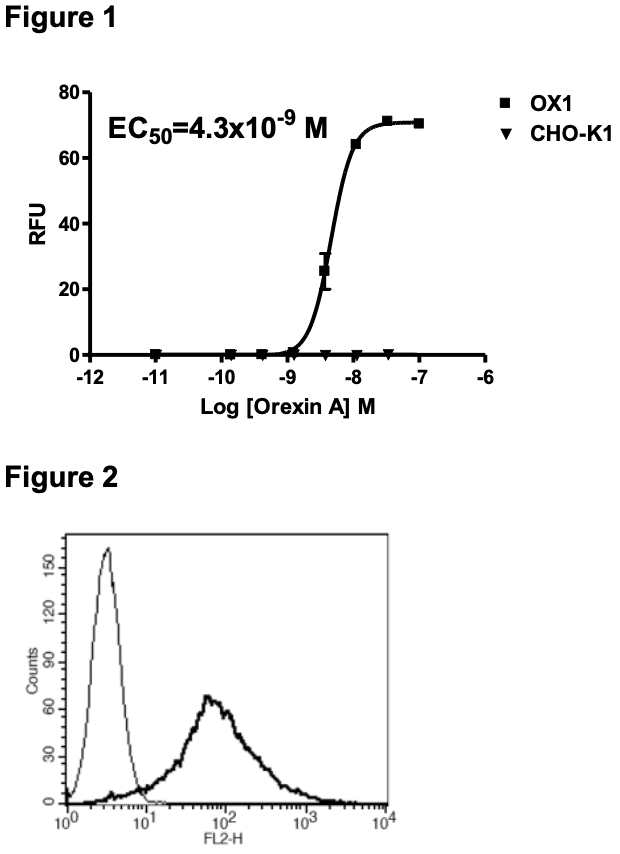Product Information
Catalog Number:
C1033-1
Lot Number:
C1033-1-061609
Quantity:
1 vial (2 x 106) frozen cells
Freeze Medium:
Sigma Freezing Medium (C-6164)
Host cell:
CHO-K1
Transfection:
Full-length Human HCRTR1 cDNA (GenBank Accession Number NM_001521.1) with FLAG-tag sequence at the N-terminus
Recommended Storage:
Liquid nitrogen upon receiving
Propagation Medium: DME/F12, 10% FBS, 10 µg/mL puromycin
Stability:
Stable in culture for minimum of two months
Data Sheet
Background: Orexins, or hypocretins, produced by a small group of neurons in lateral hypothalamus, are involved in many physiological functions such as feeding, energy metabolism, sleep, arousal, reward, substance abuse, stress, as well as sympathetic and cardiovascular functions. OX1 is one of the two receptors for the orexins. The receptor is expressed in the brain regions such as the hypothalamus, hippocampus and thalamus. Recent studies have indicated that orexins may also be useful in the treatment of schizophrenia and other psychiatric disorders.
Application: Functional assays

Figure 1. Dose-dependent stimulation of calcium flux upon treatment with ligand, measured with MultiscreenTM Calcium 1.0 No Wash Assay Kit (Multispan MSCA01). Figure 2. Receptor expression on cell surface measured by flow cytometry (FACS) using an anti-FLAG antibody. Thin line: parental cells; thick line: receptor-expressing cells.
References:
Deutch and Bubser (2007) The orexins/hypocretins and schizophrenia. Schizophr Bull 33:1277-1283.
Smart et al. (1999) Characterization of recombinant human orexin receptor pharmacology in a Chinese hamster ovary cell-line using FLIPR. Br J Pharmacol 128:1-3.
